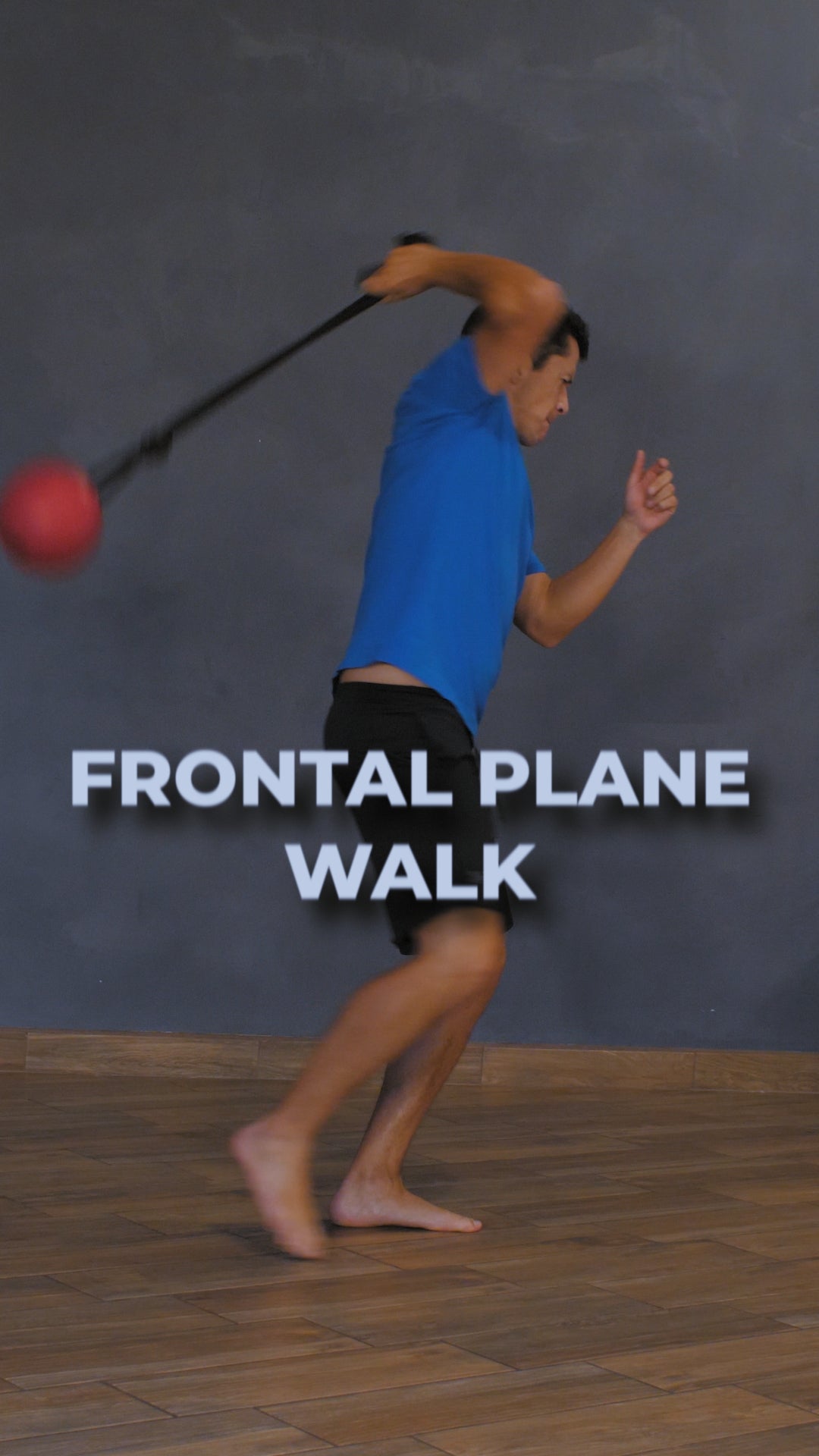Once you are familiar with the forehand and the backhand swing, you can move pretty much in every direction, IF you know where the Paraball is located relative to your body, and relative to where you want to move. IF we want to move in the FRONTAL PLANE, there are a few ways to go about it.
One of the easiest ways of moving in the frontal plane is to follow the rotation of the ribcage with a step during the follow through of the swing.
When the Paraball is doing a circular motion in the frontal plane, and we want to do a rotation on the transverse plane, the 12 and 6 o clock positions are the only two moments where the two planes intersect each other. If we wanted to do the transverse plane rotation at any other time, we have to perform an additional move with the Paraball.
The other reason why we have to do the transverse rotation when the Paraball is located in those positions, is because there is something called angular mass, which is a quantity that determines how much force we have to apply to rotate an object over a certain axis. The angular mass of the Paraball is at its lowest on the transverse axis, when it is located in either of those positions.
Leave a comment if you have any questions.




Leave a comment
All comments are moderated before being published.
This site is protected by hCaptcha and the hCaptcha Privacy Policy and Terms of Service apply.